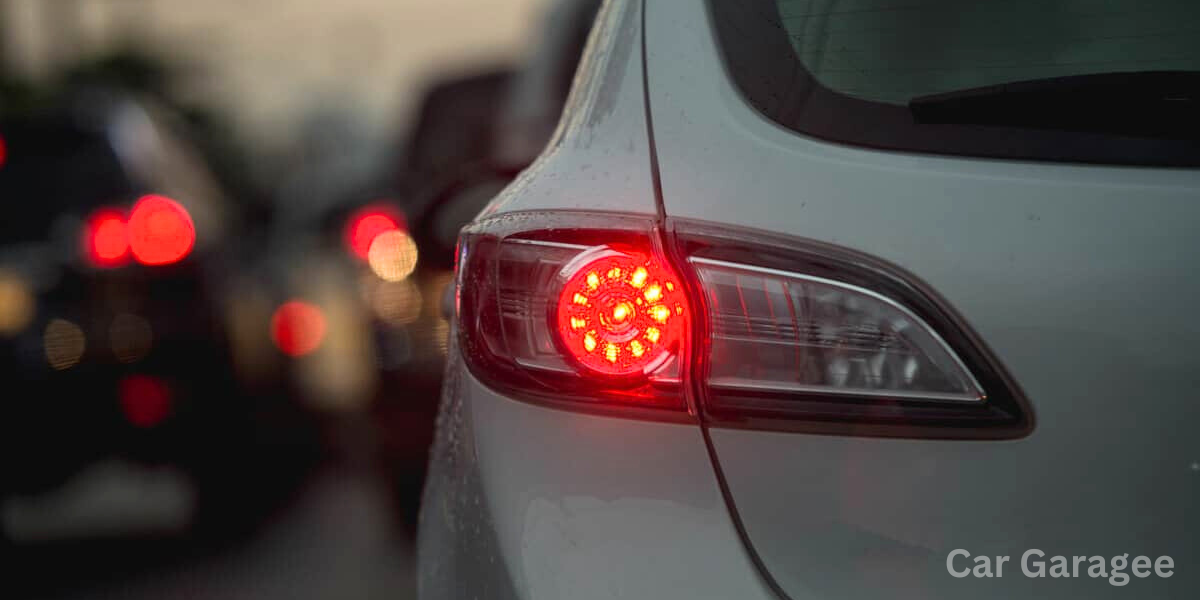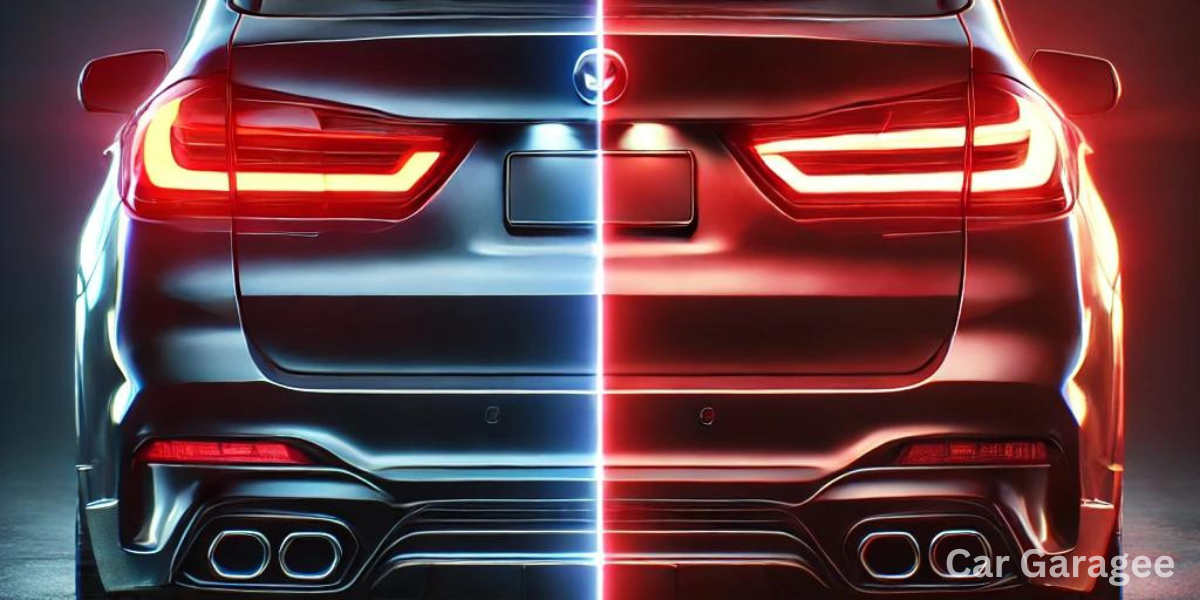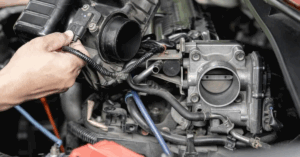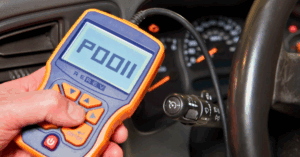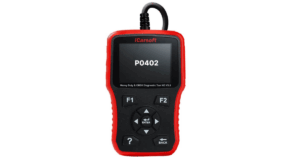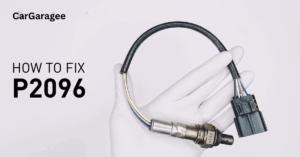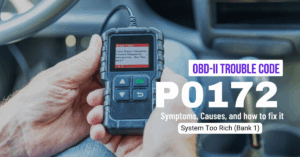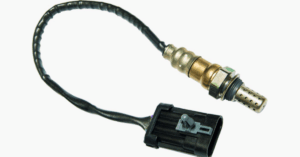Driving at night can be risky, especially if your brake lights or tail lights aren’t working. Imagine you’re driving, thinking everything’s okay, but your brake lights aren’t working even though your LED flashers are. This can be dangerous because other drivers won’t know when you’re stopping. If your led flashers work but brake light doesn’t, you might only realize it once it’s too late, putting you and others at risk. It’s essential to ensure all your lights work to keep everyone safe on the road.
8 Reasons Why Led Flashers Work But Brake Light Doesn’t
If your tail lights work fine but your brake lights don’t respond when you press the pedal, it can be confusing and dangerous. This issue can make it difficult for other drivers to know when you’re slowing down or stopping, increasing the risk of accidents. Let’s discuss eight common reasons why your led flashers work but brake light doesn’t and how you can fix them.
-
Burnt-Out Brake Light Bulbs
Burnt-out brake light bulbs are a common reason for led flashers work but brake light doesn’t. Each bulb in your vehicle’s lighting system contains filaments that illuminate when activated. In many cars, the same bulb handles both tail light and brake light functions, using separate filaments for each. Over time, the brake light filament can burn out, even while the tail light filament remains operational.
Solution: To check for a burnt-out bulb, start by removing the bulb from its socket. Access the bulb through the trunk or rear panel of your car. Once you have the bulb out, inspect it closely—if the filament inside appears broken or the bulb looks darkened, it needs replacing. Make sure to purchase a bulb that matches the type and wattage specified for your vehicle. Replacing the bulb is straightforward; reverse the removal steps and ensure the new bulb is securely in place.
-
Blown Fuse
The electrical system in your car is protected by fuses, which prevent damage from electrical surges. A blown fuse can cause the brake lights not to work while the tail lights remain functional. The brake light circuit typically has its dedicated fuse, so the brake lights fail when it blows.
Solution: Locate your vehicle’s fuse box, usually under the dashboard or in the engine compartment. Check your owner’s manual to identify the specific fuse for the brake lights. Pull the fuse out and inspect it—if the metal strip inside is broken, the fuse is blown and needs replacement. Replace it with a new fuse of the same amperage. If the new fuse blows shortly after replacing it, there may be a deeper electrical problem, and you should consult a professional to prevent further issues.
-
Faulty Brake Light Switch
The brake light switch is a critical component near the brake pedal. This switch sends the signal to your brake lights to turn on whenever you press the brake pedal. If the switch is faulty, it can result in led flashers work but brake light doesn’t.
Solution: To check the brake light switch, locate it near the top of the brake pedal assembly. Press the brake pedal and observe whether the brake lights activate. If they don’t, try adjusting the position of the switch by loosening its mounting screws and moving it closer to the brake pedal arm. If the lights still don’t work, the switch may be defective and need to be replaced. Replacement switches are typically inexpensive and can be installed with basic tools.
-
Bad Electrical Ground
An electrical ground is essential for any electrical circuit to function correctly. In many vehicles, the brake lights share a ground connection with other lighting components. If this ground connection becomes loose, corroded or damaged it can cause led flashers work but brake light doesn’t.
Solution: Check the ground wire for the brake light circuit, usually connected to the vehicle’s chassis near the brake light assembly. Look for signs of corrosion or loose connections. Clean any corroded areas with a wire brush and tighten any loose connections. If the ground wire itself is damaged, it should be replaced. To test the ground, you can temporarily use a jumper wire to connect the brake light switch directly to good ground. If the brake lights turn on, you must permanently fix the ground connection.
-
Damaged Wiring
Over time, the wiring that carries power to your brake lights can become damaged. This could be due to wear and tear, exposure to moisture, or even rodents. If the wiring is frayed or broken, it can lead to led flashers work but brake light doesn’t. This problem might also cause intermittent issues, where the lights work occasionally but only sometimes.
Solution: Inspect the wiring running from the fuse box to the brake light switch and from the switch to the brake light bulbs. Pay special attention to areas where the wires pass through tight spaces or near moving parts, as these are common spots for damage. If you find any frayed or broken cables, they will need to be repaired or replaced. Use electrical tape or heat-shrink tubing to protect the repaired wires and prevent future damage.
-
Turn Signal Switch Issues
The brake light circuit is integrated with the turn signal circuit in many vehicles. This means that a problem with the turn signal switch can affect the brake lights. If the turn signal switch is worn out or faulty, it could result in led flashers work but brake light doesn’t.
Solution: To diagnose this issue, refer to your vehicle’s wiring diagram to identify the connection between the brake light and turn signal circuits. Access the turn signal switch’s electrical connector, press the brake pedal and use a test light to probe the relevant wire. If the test light doesn’t activate, the turn signal switch may need to be replaced. Replacement can be more complicated than other repairs, often requiring the removal of the steering column cover, so consider seeking professional assistance if you need more clarification.
-
Malfunctioning LED Flashers
If your LED flashers work but brake light doesn’t, the problem might be specific to the LED units connection to the brake light circuit. LED flashers often operate on a circuit different from brake lights so that the issue could be isolated to the brake light wiring or connections.
Solution: Start by checking the connections for the LED units to ensure they are secure and corrosion-free. If the connections are fine, use a multimeter to test the voltage at the brake light circuit when the pedal is pressed. If there’s no voltage, the issue lies in the brake light circuit, possibly in the wiring or the brake light switch. If voltage is present but the LED brake lights don’t work, the LED units may be faulty and require replacement.
-
Trailer Wiring Issues
When towing a trailer, problems with the wiring between your vehicle and the trailer can cause the running lights on the trailer to work or the brake lights on the trailer not to function. This issue is often due to a faulty connection in the trailer wiring harness.
Solution: Start by inspecting the trailer wiring harness, paying attention to the connector that plugs into your vehicle. Look for any signs of corrosion, loose connections, or broken wires. Clean the connectors and ensure they are securely plugged in. If the problem persists, use a multimeter to test the wiring continuity from your vehicle to the trailer lights. Repair or replace any damaged wires or connectors to restore proper function.
READ MORE:
How Long To Pull Vacuum on Car AC System?
Reasons For Alternator Bearing Noise
Breaking Down the Fuel Induction Service Cost
Understanding the Difference Between Brake Lights and Taillights
Regarding vehicle lighting, brake lights and tail lights are two essential components that play a crucial role in road safety. While they are often mentioned together, they serve different purposes and operate in distinct ways. Understanding the difference between brake lights and tail lights, especially in situations where your LED flashers work but brake light doesn’t, can help you maintain your vehicle properly and ensure your safety on the road.
What Are Tail Lights?
Tail lights are the red lights located at the rear of your vehicle. They are designed to illuminate whenever your headlights are turned on, whether driving at night, in low-light conditions, or bad weather. Tail lights are crucial for making your vehicle visible to other drivers from behind, helping to prevent accidents in situations where visibility is reduced.
Function: Tail Lights remain on continuously as long as your headlights or daytime running lights are active. They do not change in intensity and are unaffected by braking or acceleration. Their primary purpose is to signal your presence to other drivers, ensuring they can see your vehicle even in low-light conditions.
What Are Brake Lights?
Brake lights are also red lights located at the rear of your vehicle, but they serve a different function than taillights. Brake lights are designed to illuminate when you press the brake pedal, signaling to drivers behind you that you are slowing down or coming to a stop.
Function: Unlike tail lights, brake lights are activated only when you apply the brakes. They are brighter than tail lights to indicate your intention to stop clearly. This increased brightness helps to catch the attention of drivers behind you, reducing the risk of rear-end collisions.
How Do They Work Together?
Although brake lights and taillights are separate systems, they work together to keep you safe on the road. Tail lights help others see your vehicle in low light, while brake lights let them know when you’re slowing down or stopping. Other drivers can spot and respond to your actions when both work correctly.
For example, other drivers can see your vehicle from a distance when driving at night with your taillights. If you suddenly need to slow down, your brake lights will light up, warning those behind you. This teamwork between visibility and signaling helps prevent accidents. However, if your LED flashers work but the brake light doesn’t, it can cause confusion and increase the risk of a collision, making it essential to keep all lights in working order.
Common Issues and Maintenance Tips
Understanding the difference between brake lights and taillights also involves knowing how to maintain them. Both systems rely on light bulbs, fuses, and wiring that can wear out over time.
Tail lights: If your tail lights stop working, it could be due to a burnt-out bulb, a blown fuse, or a wiring issue. Regularly checking your tail lights by turning on your headlights and walking around your vehicle can help you spot any problems before they become a safety hazard.
Brake Lights: If your brake lights are not working, it could be due to a burnt-out bulb, a faulty brake light switch, or a problem with the wiring. It’s essential to test your brake lights regularly by pressing the brake pedal and checking for illumination. If you notice any issues, addressing them promptly can prevent accidents and avoid potential fines.
Impact of Aftermarket Modifications on Led Flashers Work But Brake Light Doesn’t
When dealing with problems like your led flashers work but brake light doesn’t, one important thing that often gets overlooked is the effect of aftermarket modifications. Many people add aftermarket LED flashers, brake lights, or even entire lighting systems to make their vehicles look better. While these changes can be visually appealing, they can also cause unexpected electrical issues, like the brake lights not working correctly.
How Aftermarket Modifications Can Affect Brake Lights:
-
Incompatibility Issues:
Aftermarket LED lights might not always work perfectly with your car’s existing electrical system. This can cause situations where the LED flashers work but brake lights don’t. Sometimes, the car’s system might not recognize the LED lights correctly, leading to problems.
-
Load Resistance Problems:
Traditional bulbs use more power than LED bulbs. When you switch to LED lights, the lower power use can confuse your car’s computer system, leading to issues with the brake lights. That’s why some LED installations need load resistors to make sure everything works properly.
-
Wiring and Installation Errors:
If the aftermarket lights weren’t installed correctly, it could disrupt the circuit that controls your brake lights. For example, if the wires were connected the wrong way or the new system wasn’t grounded properly, it could lead to only the LED flashers working while the brake lights don’t.
Solution:
If you’ve recently added aftermarket LED lights and are now having issues where the led flashers work but brake light doesn’t, it’s important to check the installation. Make sure the lights are compatible with your vehicle’s make and model. Ensure that any needed load resistors are in place, and that all wiring connections are secure and properly grounded. If you’re not sure about the installation, it might be a good idea to get help from a professional to avoid any more electrical issues.
FAQS
What Should I Do If My LED Flashers Work But Brake Light Doesn’t?
If you notice that your LED flashers work but brake light doesn’t, start by checking the brake light bulbs and the fuse. If these components are fine, the issue could be related to a faulty brake light switch or damaged wiring. It’s important to fix this issue promptly to ensure your vehicle’s brake lights signal correctly to other drivers.”
Why Do I Have Turn Signals but No Brake Lights?
If your turn signals are working but your brake lights aren’t, it’s often due to a specific issue within the brake light circuit. While the turn signals and brake lights may share some wiring, they function through different switches. The most common reasons for this problem are a faulty brake light switch, a blown fuse, or burnt-out brake light bulbs. It’s also possible that there’s a problem with the wiring specific to the brake lights while the turn signal circuit remains intact.
Quick Fix: Start by checking the brake light bulbs to see if they need replacing. If the bulbs are fine, inspect the fuse for the brake lights and replace it if it’s blown. Lastly, check the brake light switch located near the brake pedal; if it’s faulty, replacing it should resolve the issue.
Why Are My Running Lights Working but No Brake Lights?
Running lights and brake lights are part of separate circuits in your vehicle. If your led flashers work but brake light doesn’t, the issue is likely isolated to the brake light system. This could be due to a burnt-out brake light bulb, a faulty brake light switch, or a wiring issue that affects only the brake lights.
Quick Fix: First, check the brake light bulbs to ensure they aren’t burnt out. If the bulbs are good, inspect the brake light switch and the fuse specific to the brake lights. If all these components are functioning properly, a wiring issue may need to be addressed.
Do Hazard Lights Affect Brake Lights?
Hazard lights and brake lights are generally on separate circuits, so using your hazard lights shouldn’t directly affect the brake lights. However, in some vehicles, especially older models, the wiring can be interconnected, so a fault in one system could affect the other. For instance, if there’s a wiring issue or a problem with the turn signal switch (which often integrates the hazard lights), it could cause malfunctions in the brake lights.
Quick Fix: If your brake lights stop working when the hazard lights are on, it could indicate a wiring issue or a fault in the turn signal switch. Inspect these areas, and if you’re unsure, consult a mechanic.
Why Is My Full Tail Light Not Lighting Up on a Honda Accord?
If the full tail light on your Honda Accord isn’t lighting up, it could be due to several issues. Common causes include burnt-out bulbs, a blown fuse, or a problem with the wiring. It might also be related to an issue with the LED units for newer models, as many modern vehicles use LED lighting.
Quick Fix: First, check if the bulbs need replacing. If they are fine, inspect the fuse associated with the tail lights and replace it if needed. Ensure that the LED units and wiring for LED tail lights are intact. If the issue persists, a more in-depth inspection by a professional might be required, especially if it is related to the vehicle’s electrical system.
Why Is My Full Tail Light Not Lighting Up on a Honda Accord 2022?
For a 2022 Honda Accord, a full tail light not lighting up is likely related to a faulty LED unit or a wiring issue. Since newer vehicles often use LED technology for tail lights, a malfunctioning LED strip or module could cause the entire tail light to go out. Alternatively, there could be a problem with the electrical connections specific to that tail light.
Quick Fix: Start by checking the electrical connections to ensure they are secure and corrosion-free. If the connections are fine, the issue might be with the LED unit, which could require replacement. As this is a newer model, a Honda dealership or a qualified technician should address any persistent issues to ensure proper repairs under warranty if applicable.

Mian Hashir is a passionate automotive enthusiast and the lead author at Car Garagee, a website dedicated to providing in-depth car reviews, maintenance tips, and the latest news in the automotive world. With years of experience in the industry, Hashir combines his technical knowledge with a love for cars to deliver insightful and engaging content. Whether you’re a car owner or a curious reader, Mian Hashir’s articles help readers make informed decisions, from choosing the right vehicle to understanding how to keep it in top condition.


